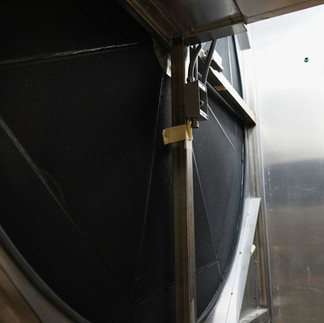Optimizing Lithium-Ion Battery Manufacturing with Active Desiccant Systems
- Insight Partners

- Aug 9, 2024
- 2 min read

In the precision-driven world of lithium-ion battery manufacturing, controlling environmental conditions is not just a requirement but a necessity for ensuring product integrity and safety. Active desiccant systems play a pivotal role in maintaining the optimal humidity levels required to prevent quality degradation and ensure the safety of battery production processes.
How Active Desiccants Work
Active desiccant systems utilize moisture-adsorbing materials like silica gel integrated into a mechanical setup that actively controls the humidity by adsorbing moisture from the air. These systems typically involve a regenerative process where the desiccant is periodically heated to release adsorbed moisture. This is then vented out of the system, allowing for continuous operation without saturation.
Applications in Lithium-Ion Manufacturing
The manufacturing of lithium-ion batteries requires extremely low humidity conditions to prevent unwanted chemical reactions. Moisture can react with the electrolytes and other reactive materials used in batteries, leading to reduced efficiency, shorter battery life, and, in some cases, safety risks such as thermal runaway or fire.
Electrode Preparation: The process of coating and drying electrodes is highly sensitive to moisture. Active desiccant systems ensure a dry environment to prevent the formation of hydrates that can lead to poor electrode performance.
Assembly Rooms: During the assembly of battery cells, even trace amounts of moisture can be detrimental. Active desiccants help maintain a dry atmosphere to ensure the integrity of the electrolyte materials and the overall battery structure.
Packaging Areas: Sealing lithium-ion batteries in a low-humidity environment ensures they are moisture-free, which could degrade storage and operational capacity over time.
Practical Advice
For effective implementation of active desiccant systems in lithium-ion battery manufacturing, it is essential to:
Design for Ultra-Low Dew Points: Battery manufacturing facilities often require dew points as low as -40°F or lower. Selecting a desiccant system capable of achieving and maintaining these levels is crucial.
Ensure Tight Sealing and Insulation: The manufacturing environment must be well-sealed and insulated to prevent external humidity from compromising the interior conditions.
Regular Maintenance and Monitoring: The desiccant system should be maintained regularly to ensure it operates efficiently. Monitoring systems should be in place to detect any rise in humidity levels instantly.

For more details on managing sophisticated environments like battery manufacturing facilities, contact Insight Partners today.
Photos were taken from our recent factory visit to Climate by Design International. For more information about Climate by Design International, please visit their page: Climate by Design International (cdihvac.com)
Stay ahead in the HVAC industry. Get the latest insights delivered straight to your inbox by subscribing to our blog - SUBSCRIBE.





























Comments